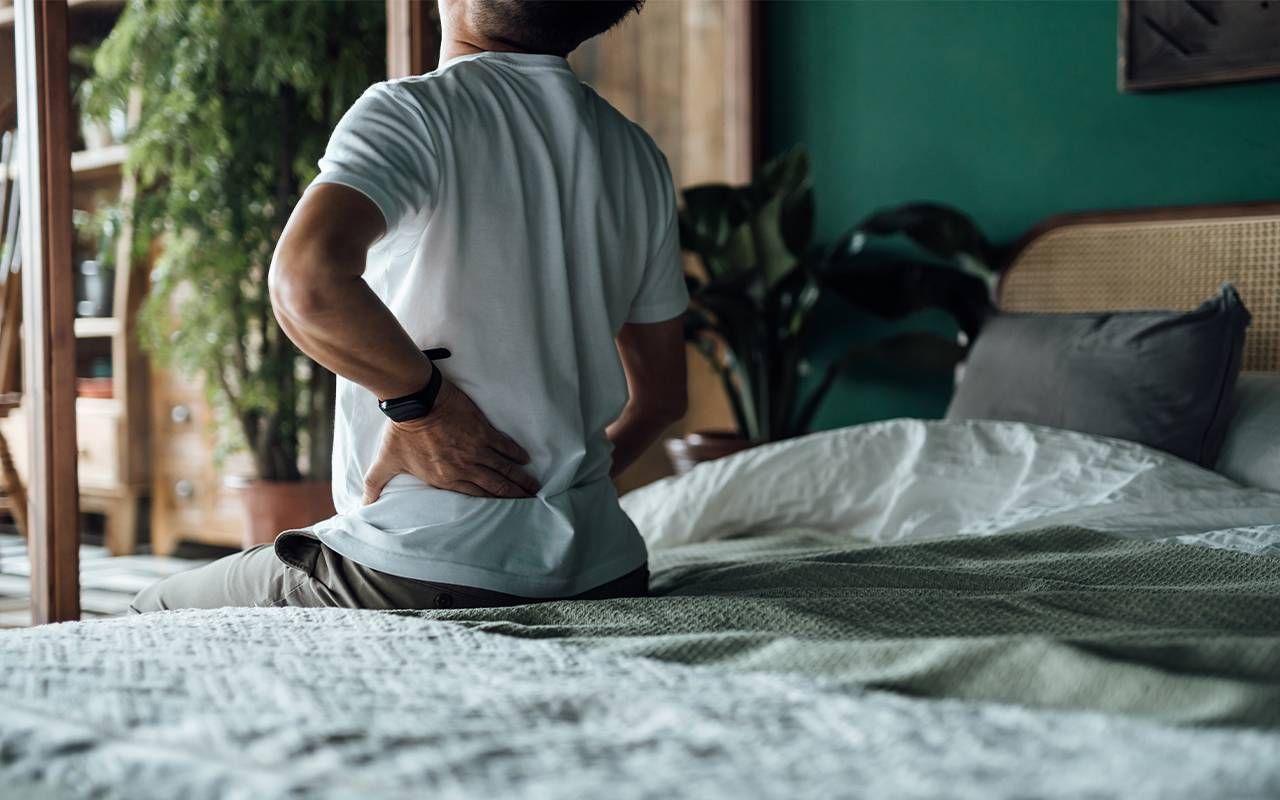5 Techniques to Relieve an Aching Lower Back
Soothing strategies and expert tips to alleviate pain and discomfort
In nursing school, our instructors warned us over and over again to watch our backs. Every anecdote seemed to end with some nurse getting back surgery.
But as carefree twentysomethings, almost none of us listened. I yanked heavy patients up in bed by myself, rolled people back and forth to change dressings solo, and was generally hesitant to ask for help.

Fast forward 14 years. At seven months pregnant, after a difficult code on my unit, I herniated two lumbar discs and spent two days in the hospital. I came home with a walker, a shower chair and a toilet riser. It was a humbling reminder that my nursing instructors had always been right.
For a long time, I thought I would feel broken forever. I did not want back surgery unless it was unavoidable. Surgery is a viable option, as are medications, but the treatment for back pain is steering more and more toward rehabilitation through physical therapy.
Up to 84% of adults will experience back pain at some point. So let's talk about how to beat it back.
Physical Therapy
According to the Journal of Orthopaedic & Sports Physical Therapy, exercise and manual therapy are the best medicine for chronic back pain. The Mayo Clinic states the causes of back pain can include:
● Ankylosing spondylitis
● Arthritis
● Muscle and ligament strain
● Osteoporosis
● Ruptured or bulging vertebral discs
Per Mayo, many of these can be prevented and treated with exercise and flexibility training. Take herniated discs, for example. Your spinal discs cushion your vertebrae – backbones – and can sometimes shift out of position, pushing against nerves and causing pain. Stretch and strengthening exercises can coax the disc back into place.
The best way to make PT work for pain control is to make the exercises a part of your daily life.
Using the McKenzie Method, says Loren Fishman, MD, medical director of Manhattan Physical Medicine and Rehabilitation in New York, "people with herniated discs arch their backs, creating a partial vacuum at the form of the vertebrae which draws the herniated part of the disc forward and away from the nerves."
Physical therapy can heal a bulging or ruptured disc and other similar injuries throughout the body. You can use exercises, says Fishman, to move a joint back into alignment and to soothe and stretch spasming muscles.
By far, physical therapy (PT) has helped me the most. Seeing a physical therapist can be expensive, but once you know the exercises, you can keep doing them at home at no cost. The best way to make PT work for pain control is to make the exercises a part of your daily life.
Yoga
Fishman often encourages patients to use his favorite treatment: yoga. "Innocuous, almost free, effective, no downtime and best of all: people can keep doing it all their lives," he says, and notes yoga can also provide "better posture, better balance, greater strength and range of motion, refined coordination and lower anxiety."
You can modify yoga poses to suit your needs. Modifications will either reduce the intensity of an exercise or change its focus. For example, if you have lower back pain, you could try sitting on a folded blanket or chair to reduce the strain on the painful area.
Cold and Heat Therapy
Cold works better than heat for back pain, explains Fishman, because heat opens your blood vessels, and the first thing they do is carry heat away from the sore spot. "Cold contracts those blood vessels," he notes, "and so it penetrates and is a good anesthetic."
My physical therapist advised me to alternate heat and cold. I have found heat is good for the mornings when I'm stiff, and cold works best after I've exercised my back or if it's sore a bit into the day. Both cold and heat can help with pain and swelling, according to Mayo Clinic, when applied for 15-20 minutes at a time.
Massage
This is where the "manual therapy" mentioned above comes in. Sometimes I'd walk into the PT clinic, and my therapist would take one look at me before telling me to lie down. I expected PT to be something like "The Biggest Loser" competition, with a burly therapist yelling at me to "work harder!"
Muscle strength gave me back mobility, and now I'm hooked.
But many sessions included manual therapy. According to Mayo Clinic, this therapy involves a physical therapist repositioning muscles, tendons, and nerves. It mostly felt like a deep tissue massage and helped every time.
My therapist also taught me how to use a tennis ball at home to work out knots in my back. A study published in 2023 in The Journal of Nursing showed the tennis ball method can help relieve nurses' back pain and offers an easy and inexpensive method of pain control.
Medication
When you have a sudden fierce pain in your back, you only want someone or something to make it stop. But unfortunately, many call urgent care or ERs, saying, "Give me the good stuff!" And while pain medication, especially narcotics, can help in a critical situation, they aren't a long-term answer.
Some commonly suggested back pain medications include:
● Antidepressants: This category of medicine might raise your eyebrows, but they can treat pain by changing how your brain perceives it.
● Anti-seizure: Seizure medications affect the nerves, so this group might work best for you if your pain is nerve-based.
● Muscle Relaxers: Medicines in the muscle relaxer category don't work on your muscles, but on your brain, according to Cleveland Clinic. They help the brain to stop muscle spasms, thus preventing pain.
● NSAIDS: Non-steroidal anti-inflammatory medications (NSAIDS) offer an over-the-counter option for people with back pain. Tylenol (acetaminophen) and Advil (ibuprofen) fall into the NSAID category and can be effective for acute pain.
● Narcotics: Opioids like morphine and oxycodone fall into this category. These medications offer effective pain control short-term but are habit forming and stop working as well if taken over a long period.
Let your provider know if you want to try a medication for your back pain. I still occasionally use a muscle relaxer or an NSAID, but over time I've needed them less and less.
Steroids or Surgery
Sometimes, despite everyone's best efforts, pain doesn't resolve with exercise or medications. You can speak to your health care provider about steroid injections or surgery.
"If PT, yoga, and time itself don't relieve the pain," says Fishman, "then the pain from herniated discs often resolves with epidural steroids." However, he notes that steroid injections can be less effective for other pain-causing conditions, like spinal stenosis.
One of the most severe complications of a back injury is nerve damage.
No one can tell you when to have back surgery. That decision is a team effort between you and your health care provider. If you decide surgery is the right option, you have many more choices than you used to.
A microdiscectomy, for example, can treat herniated discs with minimal recovery time, says Fishman, and "newer treatments for spinal stenosis are quite a bit better than the standard fusion." Your provider can help you understand all your options and advise which might be best for you.
When to Call a Doctor
When I was in the ER, every doctor and nurse that walked in asked me about my bladder and bowel control. While it may seem like an odd question, one of the most severe complications of a back injury is nerve damage.
If you find you can't urinate, that you eliminate waste without knowing it, or have numbness that ascends from your feet toward your knees, it may be a sign your nerves are involved. In this case, you might need a more urgent treatment plan.
Seek out medical care right away, per Cleveland Clinic, if your back pain is paired with the following:
● Bowel or bladder problems
● Fever
● Pain that doesn't get better after about a week
● Pins-and-needles, pain, weakness or numbness in your buttocks or legs
● Unexplained weight loss
I went from needing help getting out of bed to shoveling mulch for hours and had a baby in between. The journey was long. It's been almost three years, and I still notice pain when I lay off my exercises. But muscle strength gave me back mobility, and now I'm hooked.


